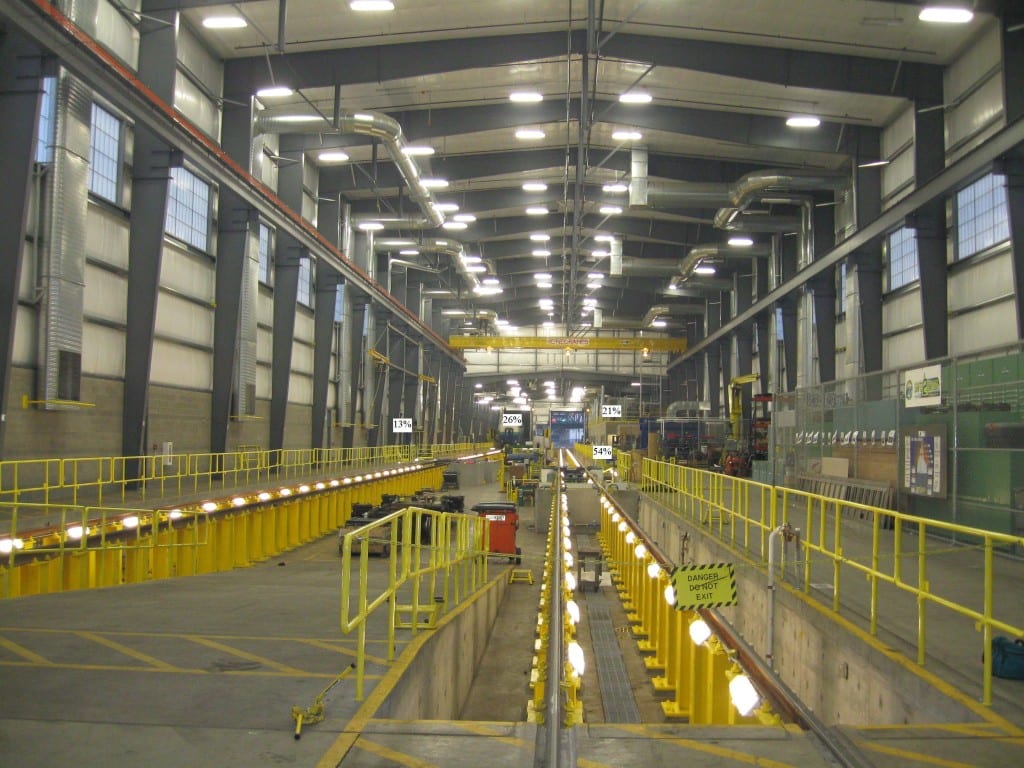 At Amtrak’s Seattle yard, the lights shine a little brighter and the power bill is a lot smaller thanks to energy-efficient strategies created through collaboration between the railroad and Seattle City Light.
At Amtrak’s Seattle yard, the lights shine a little brighter and the power bill is a lot smaller thanks to energy-efficient strategies created through collaboration between the railroad and Seattle City Light. At Amtrak’s Seattle yard, the lights shine a little brighter and the power bill is a lot smaller thanks to energy-efficient strategies created through collaboration between the railroad and Seattle City Light.
Last fall, Amtrak retrofitted 508 light fixtures with LED and T8 fluorescent lights, replacing high-intensity discharge lamps and T12 fluorescent fixtures. The new lights shine brighter, increasing line of sight and security. LEDs also last four times longer and offer efficient dimming capabilities. This project saves about 1 million kilowatt-hours of electricity per year — enough energy to power more than 100 homes for a year.
“These lights will help reduce our overall operating and maintenance costs,” Amtrak Project Manager 1 Dan Radeke said. “They should last a long time.”
LED lights were installed at Amtrak’s warehouse A, the material control warehouse, the maintenance of equipment building, exterior lighting and the commissary.
Timers and light motion detectors, which keep lights off until people are present, also were installed. Existing compressed air lines were repaired and an energy-reducing air compressor was purchased.
The total cost of the project was $544,000. Seattle City light provided $312,000 in energy efficiency incentives for the project.
Amtrak Manager of Energy Projects John Tull introduced Radeke to Seattle City Lights’ rebate program, recognizing it could save money and reduce energy bills. Tull also identified the type of lights needed through research and conversations with City Light Senior Energy Management Analyst Aaron Houseknecht.
“The buildings are fairly new, only 4 years old, and they used efficient lighting,” Houseknecht said. “What I noticed the most was that all the lights were on and there was no one around. Conservation performed an occupancy study and found that some areas were 90 percent vacant.”
“A lighting contractor was going to replace the lamps and ballasts in this building as routine maintenance so I suggested that they attach an occupancy sensor to the lights when doing the retrofit,” he said. “There was so much energy savings and incentives that Amtrak decided to install the occupancy sensors and to convert the lights to LEDs. We also looked at an air compressor that ran continuously to feed leaky underground pipes. You could literally see air bubbles in the mud puddles. We replaced the compressor and added new piping and now the compressor only runs for a few hours a day.
Amtrak is already seeing the benefits of the changes.
Amtrak Deputy General Manager Kurt Laird helped find funding to pay for the initial cost of the LED lights before the rebate became effective.
“We wanted to conserve energy and create a better environment for our employees,” Laird said. “We accomplished our goals, and we want to keep moving forward.”
